A modern smart home uses interconnected devices, including other smart home devices and other smart home systems, to make living more convenient, secure, and energy efficient. This article explores the latest trends in smart home technology that will transform how we live in 2025.
Key Takeaways
Modern smart homes utilize interconnected devices to enhance convenience, security, and energy efficiency through the Internet of Things (IoT).
Key components include smart thermostats, smart speakers, hubs for device integration, and voice-activated systems that automate tasks and improve user interaction. Smart speakers enhance the audio experience and can be controlled through smartphones or voice commands, contributing to a cohesive and high-quality entertainment environment. Smart thermostats learn user habits and automatically adjust the temperature, creating a seamlessly connected home environment that adapts to the homeowner’s needs.
Smart home technology also enhances security and accessibility, while promoting energy efficiency and sustainability through intelligent device management.
Defining Modern Smart Homes
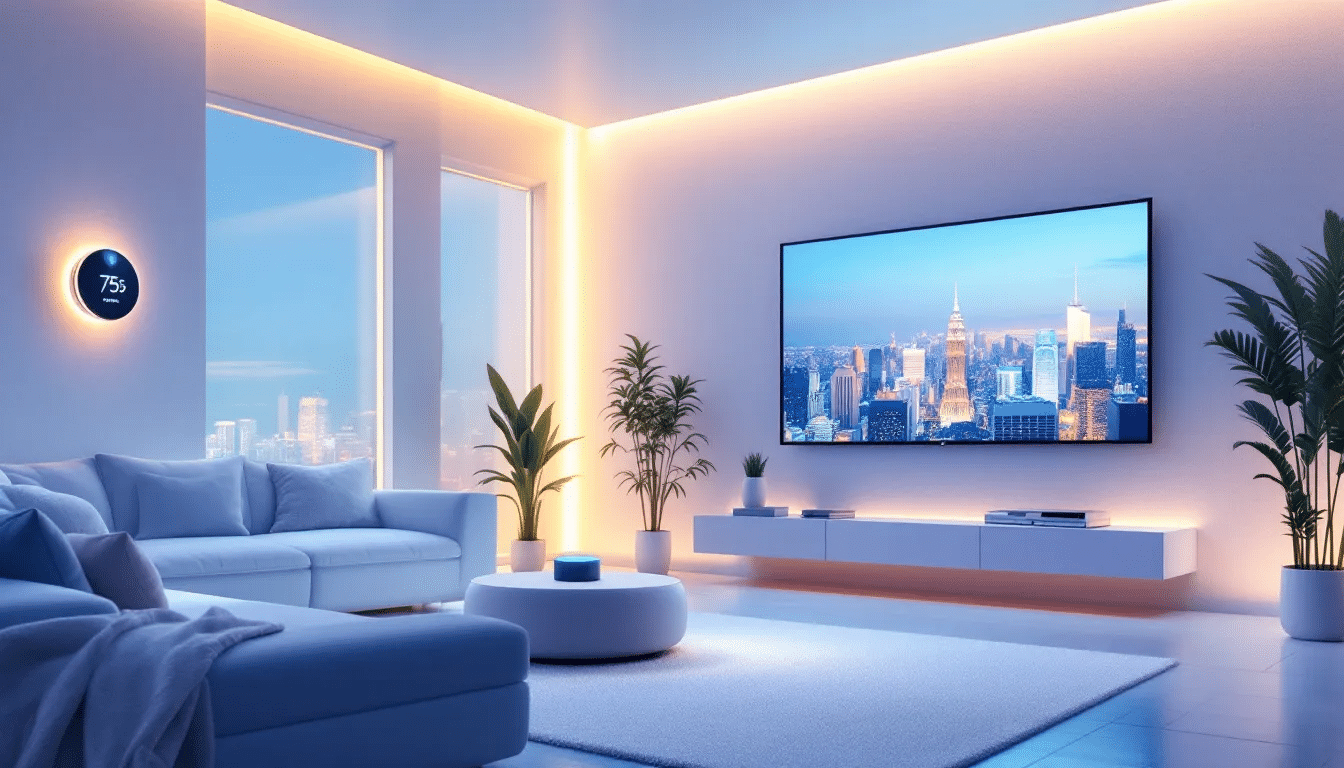
A contemporary smart home is an interconnected web of devices that collaborate to elevate convenience, security, and energy efficiency. Essentially, a smart home comprises a network of intelligent devices capable of communication and remote control for an integrated living experience. Thanks to the Internet of Things (IoT), homes are now not just automated, but can also adjust their operations to meet the resident’s specific preferences.
The primary benefit offered by smart home technology lies in its ability to simplify life through comfort-enhancing conveniences. Imagine managing your heating settings from your phone while cozy under the covers or getting alerts when someone is at your doorstep—all these capabilities enable you to manage household appliances from afar with ease and effectiveness. Ongoing innovations are persistently enhancing how user-friendly and intuitive these technological marvels are within our living spaces.
Incorporating elements from nature into daily living patterns underscores modern approaches in smart residential design—such as scheduled lighting adjustments aligning with sunset times or activating security systems automatically upon exiting one’s abode—to meld technological advancements seamlessly into natural cycles.
An exploration into the intricate components that constitute smart homes reveals how each aspect diligently works together towards forging a space marked by serenity and streamlined functionality.
Key Components of a Modern Smart Home
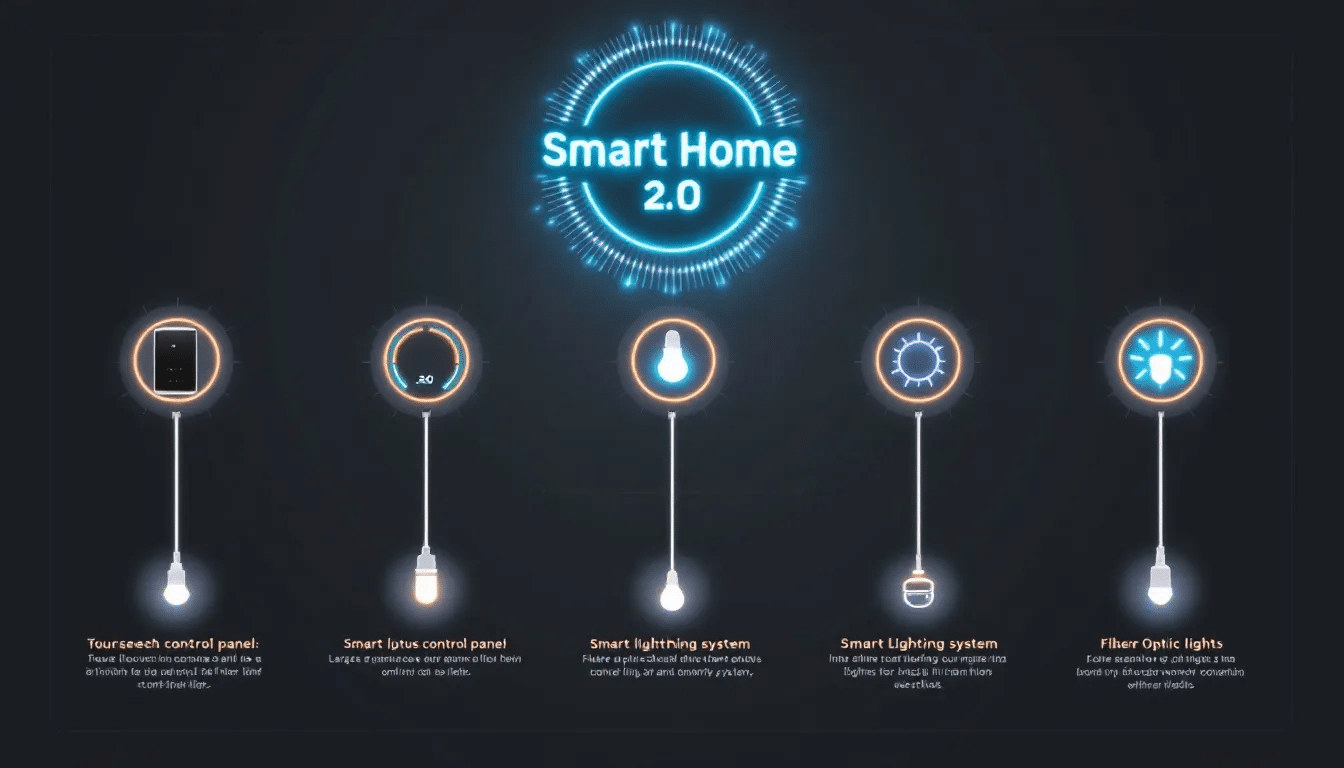
At the core of any smart home system are essential elements that encompass a range of smart devices tailored to automate and enhance everyday activities. Smart speakers play a crucial role in enhancing the audio experience and integrating with other devices like smart TVs and sound systems. The automation functionality is pivotal, allowing these devices to execute actions they’re programmed for without human involvement. For example, by utilizing smart plugs, conventional appliances can be upgraded to function as part of a smart setup, granting the ability to manage them remotely via mobile applications. This innovation expands the reach of smart technology into even traditional or non-connected appliances.
Smart thermostats represent another vital piece in this technological puzzle. They seamlessly integrate with multiple platforms within a modern home environment. These sophisticated thermostat systems adapt themselves over time based on user preferences and autonomously modify temperature settings—delivering personalized comfort while also promoting energy conservation without necessitating manual adjustments.
The progression towards software-based hubs has simplified how various components communicate within the ecosystem, offering comprehensive control from smartphone interfaces directly. Such convergence guarantees that all connected entities operate synergistically within one networked domicile infrastructure.
These central hubs act as conductors orchestrating an interconnected and smooth-running ensemble—that is your intelligent residence—bringing together disparate parts into an efficient amalgamated whole.
The Role of Smart Home Hubs
Modern smart homes rely on smart home hubs to serve as their nerve centers, linking a variety of devices and facilitating seamless communication among them.
The following are examples of such hubs:
Philips Hue Hub
Amazon Echo
Google Home
Wink Hub
These units act as the administrative core for your smart home network. They take charge by diverting traffic from congested Wi-Fi and Bluetooth channels, which results in more consistent and reliable device functionality.
Smart home hubs provide homeowners with the convenience of remote access, permitting control over devices regardless of location. This capability is particularly useful when it comes to managing aspects like lighting systems within the realm of one’s abode or attending to heating needs and appliances through a singular network—a luxury not typically found in disparate smart home systems.
Additionally, smart blinds and shades can integrate with other smart home systems to optimize convenience and energy efficiency. By streamlining command into a single hub, these central points greatly amplify efficiency while simplifying interaction between users and their various smart gadgets across the board.
Voice-Activated Systems and Voice Assistants
The advent of voice-activated systems and voice assistants has transformed our engagement with smart home technology. Smart devices, such as Amazon Alexa and Google Assistant, allow individuals to perform tasks and manage their devices without lifting a finger, thereby greatly increasing the convenience factor. From scheduling reminders to playing tunes or modulating the temperature settings, these innovative digital helpers simplify routine operations and introduce an enhanced dimension of comfort to the realm of home automation.
Smart speakers play a crucial role in enhancing the audio experience and are seamlessly integrated with voice assistants, contributing to a cohesive and high-quality entertainment environment.
Voice control’s incorporation into smart home systems signifies a pivotal development in how users interact with their environment. Rather than relying on physical interaction, individuals can now direct their smart appliances using straightforward vocal directives. With this ability for hands-free manipulation over entertainment setups among others comes greater flexibility—the shift from tactile controls to verbal commands is indeed a notable progression within the sphere of house automation.
As we look ahead, anticipated improvements in artificial intelligence are poised to refine the capabilities of voice assistants when it comes to managing domestic surroundings proactively. These future iterations aim not only at responding but also at predicting household necessities—and will take preemptive action accordingly—to reinforce an even more intelligent layer onto what defines today’s burgeoning concept known as “smart homes.”
Enhancing Security with Smart Home Technology
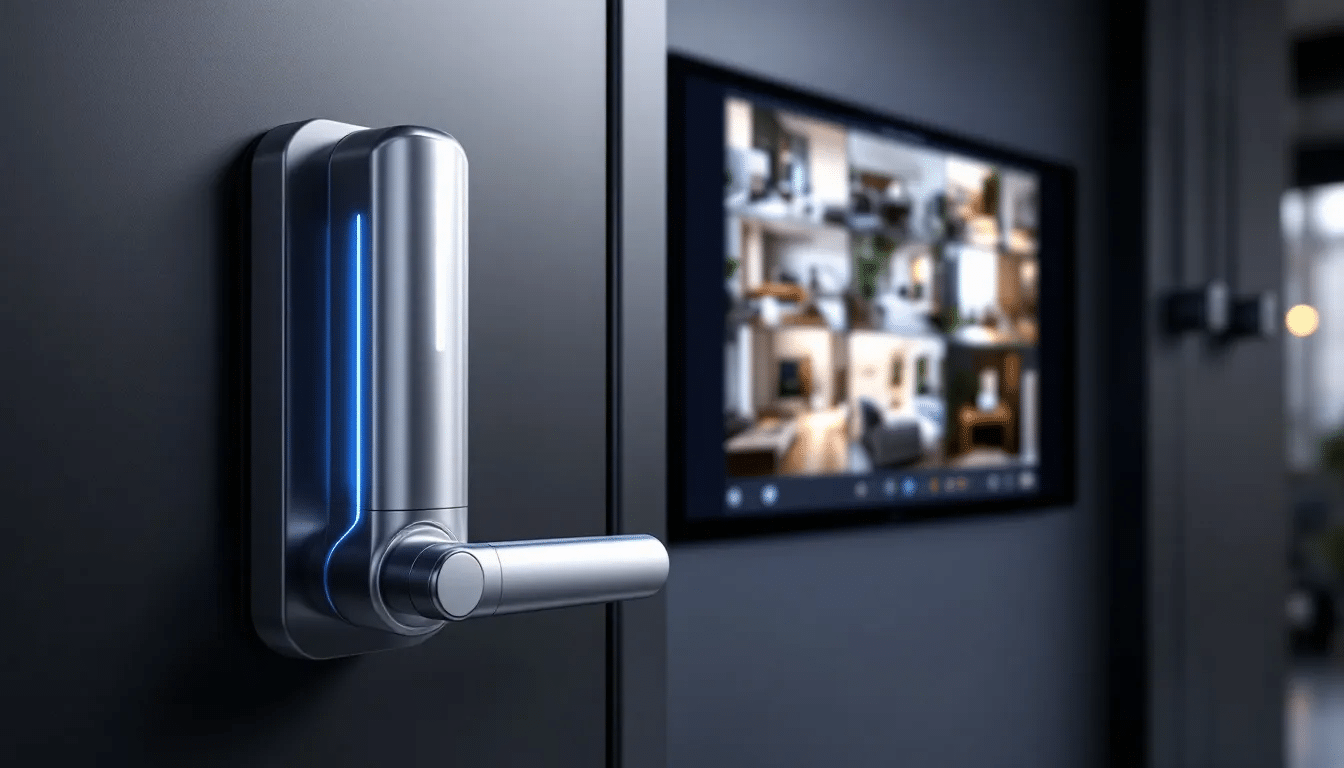
Homeowners place great importance on ensuring their property’s security, and smart home technology serves as a powerful ally in bolstering home safety. Comprehensive protection is achievable with the integration of smart security systems that encompass elements such as video doorbells, smart locks, and surveillance cameras. With a smart lock system in place, homeowners have the convenience of remotely managing entry to their homes or setting up automatic unlocking when they approach. Enhanced secure access can be provided through features like fingerprint recognition technology for added reliability.
Incorporating video doorbells into your home’s defense strategy allows you to keep an eye on visitors thanks to live-streamed visuals coupled with bidirectional audio communication capabilities—augmenting the ability to screen who comes knocking. The sophistication of motion-sensitive security cameras improves upon this by flagging any unusual movement around your premises and instantly notifying homeowners about potential breaches. These advanced notices aid them in maintaining vigilant control over their domain’s safety.
Bring smart lighting systems such as Philips to market. Hue into the equation Amplifies domestic defenses by utilizing intelligent automation tailored based on occupancy within different rooms or changes in external environmental factors—providing not just deterrence against unwanted intruders, but also furnishing adequate illumination when necessary for both enhanced safeguarding measures and elevated ease-of-use throughout one’s residence.
Smart Lighting Systems for Modern Living
Intelligent lighting systems are pivotal in the development of modern smart homes, delivering a multitude of advantages such as improved energy efficiency, heightened security, and enriched ambiance. These intelligent systems have the capability to autonomously modify their settings contingent on whether rooms are occupied and according to ambient daylight conditions, thus streamlining energy consumption and curtailing unnecessary expenditure. For example, motion detectors integrated within smart lights can trigger illumination or switch it off in areas like corridors whenever they detect movement or lack thereof—assuring that electricity is not squandered when spaces remain vacant.
By incorporating smart dimming technology that adjusts light intensity relative to available natural sunlight and specific user actions, these systems contribute to conserving power. The ability for users to oversee their home’s illumination remotely not only facilitates meticulous control over energy utilization, but also adds an element of convenience. Pre-programmable lighting schedules aligned with individual daily patterns can foster a soothing atmosphere tailor-made for occupants while simultaneously promoting judicious use of electrical resources.
Philips. Hue stands at the forefront as an exemplary provider in the domain of intelligent lighting solutions by presenting products capable of undergoing automatic alterations tuned specifically toward various activities. This functionality enhances both overall ambience quality and living experiences within one’s abode. As progress marches on, we anticipate smart lighting networks will persistently be integral components towards fostering habitations synonymous with comfort yet considerate regarding energy thriftiness.
Climate Control with Smart Thermostats
Intelligent thermostats play a pivotal role in enhancing the management of home temperatures, balancing optimal comfort with energy conservation. Systems like Google’s Nest utilize learned behavioral patterns to automatically regulate thermal settings, providing a consistently pleasant living space without manual intervention. By aligning temperature adjustments with the homeowner’s routine, these smart devices promote proficient climate control.
Such devices extend the ease of regulating your home’s environment through remote access using smartphones or tablets. This functionality is particularly valuable for pre-setting your dwelling to an ideal temperature before arrival and minimizing energy consumption when the premises are unoccupied—ensuring both convenience and warmth as needed.
Equipped to interface seamlessly with diverse HVAC setups, smart thermostats serve as integral components of sophisticated energy systems. Their integration into comprehensive solutions not only elevates household energy efficiency but also bolsters overall well-being by maintaining comfortable living conditions.
Smart Kitchen Appliances Revolutionizing Cooking
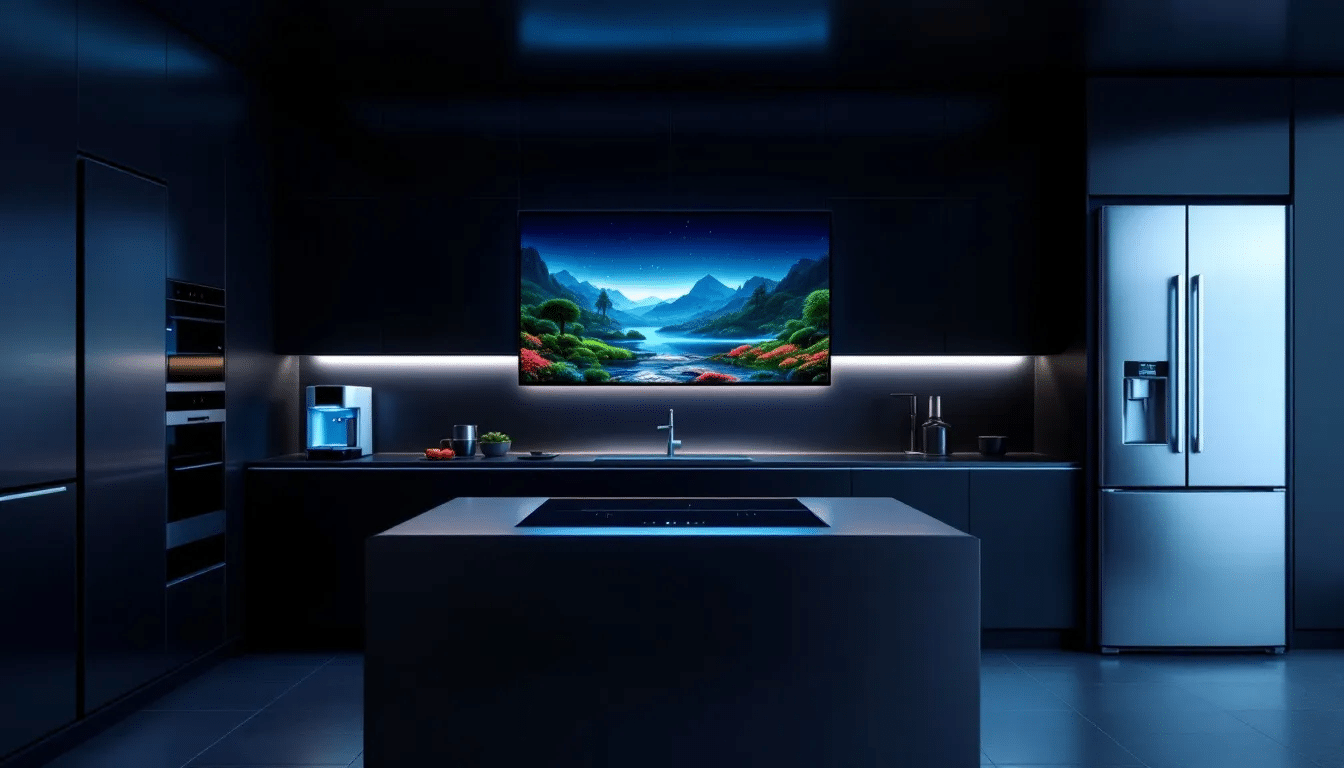
The kitchen is frequently seen as the home’s central hub, and the incorporation of smart kitchen appliances is transforming our cooking routines and management of these domestic epicenters.
These sophisticated devices aim to elevate both convenience and efficiency, streamlining various tasks and providing users with superior control over their culinary environments.
Take smart refrigerators for instance. They are capable of:
Tracking energy consumption
Assisting in food stock management
Encouraging reduced waste production
Enhancing meal preparation strategies
By scheduling when to carry out high-energy-consuming activities during times with lower electricity rates, smart appliances optimize their function. This integration of intelligent technology within kitchens not only makes the art of cooking more enjoyable, but also champions initiatives geared towards conserving energy and endorsing sustainable practices.
Entertainment in the Modern Smart Home
Smart home technology has revolutionized the enjoyment of entertainment within our homes, greatly enriching media and relaxation experiences. By harmonizing various devices such as smart TVs, sound systems, and lighting into an integrated network, smart home entertainment setups offer a captivating experience. Specifically, smart TVs have the capability to connect directly with Wi-Fi networks at home, which grants immediate access to streaming platforms including Netflix and Hulu without requiring extra equipment.
Smart speakers play a crucial role in enhancing the audio experience and integrating seamlessly with other devices like smart TVs and sound systems, contributing to a cohesive and high-quality entertainment environment.
To visual advancements, state-of-the-art audio solutions like Dolby Atmos contribute significantly by delivering enriched sounds that amplify both music listening and movie watching activities. The feature of multi-room audio permits users the luxury of experiencing their favorite tunes or films fluidly across different rooms in their residence.
With smartphone applications designed for these purposes, individuals can effortlessly control their entertainment apparatus even when away from home. This feature empowers them to curate personalized amusement environments specific to each room remotely.
Energy Efficiency and Sustainability
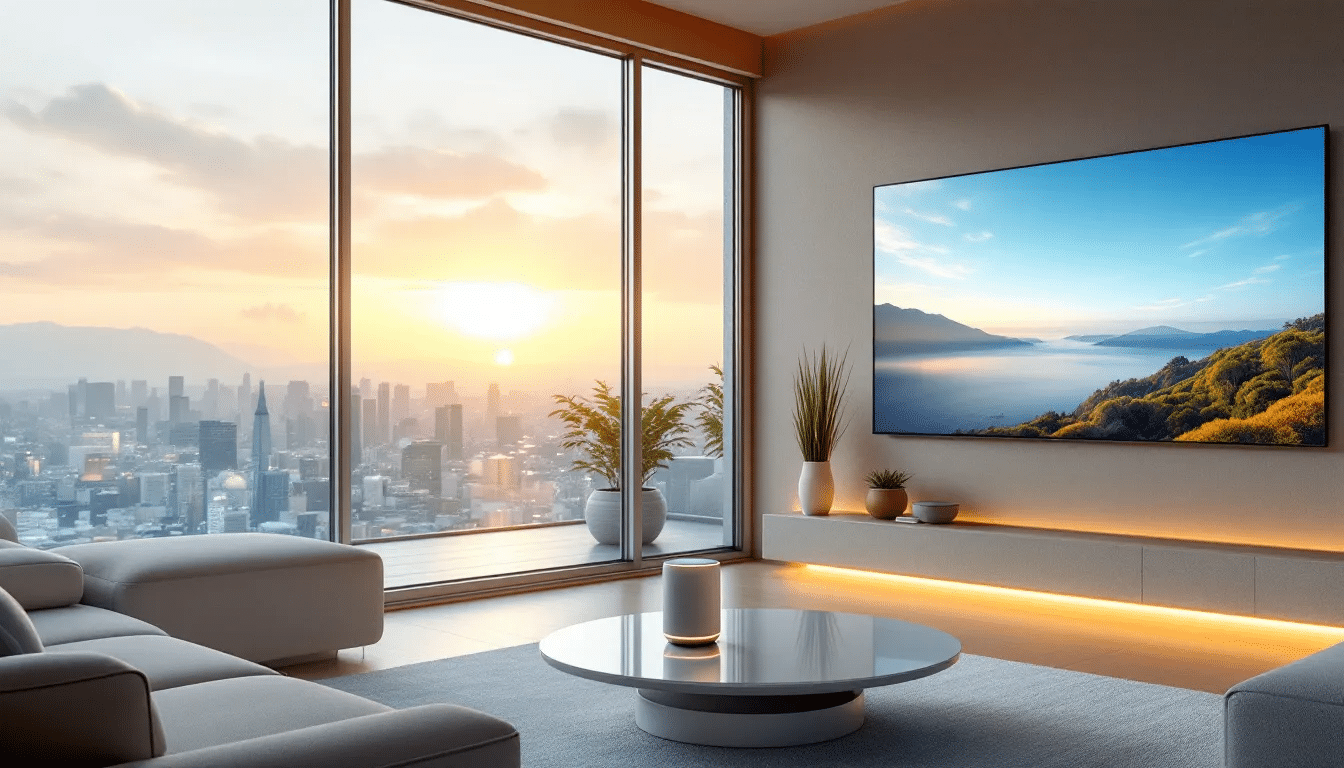
In today’s world, where energy efficiency and sustainability are key concerns for homeowners, smart home technology stands at the forefront of these efforts.
Smart systems have the capability to:
Track and analyze usage patterns to fine-tune energy consumption
Boost savings on energy costs
Provide valuable data regarding energy use that assists homeowners in spotting trends and adopting efficient practices with smart technologies.
By incorporating renewable power sources such as solar panels into a smart home system, one can significantly improve its overall energy efficiency while fostering sustainable habits. Smart home systems leverage adaptive learning algorithms to adjust their operations based on actual occupancy needs, thereby reducing unnecessary waste. By opting for smart lighting solutions, households can make a substantial cut in their environmental impact through improved management of lighting-related energy use.
Likewise, intelligent appliances like refrigerators and ovens are engineered to alter their functions autonomously according to user interaction, which aids considerably in lowering power usage. These technological advancements not only lessen our reliance on traditional forms of electricity, but also encourage an environmentally friendly living space centered around conservation.
Improving Accessibility with Smart Home Devices
The incorporation of smart home technology has been a game-changer in enhancing the autonomy of individuals with disabilities, providing them with ways to independently perform essential daily functions. Smart devices give users the ability to operate lighting systems and unlock doors through voice commands or programmed automation, which is particularly advantageous for those who face mobility challenges.
Devices such as the Amazon Echo Show extend their functionality beyond convenience by offering services like video calls and recognizing objects, thereby improving communication and navigation for people who have visual impairments. With smart plugs, even conventional appliances can be turned on or off remotely, bypassing the need to physically interact with switches—a feature that offers substantial assistance to individuals experiencing difficulties with fine motor skills.
Smart thermostats adapt over time to learn user preferences. This enables persons dealing with mobility issues to sustain an agreeable living environment without requiring manual thermostat adjustments. Automated window shades afford users faced with physical constraints the ability to modify light exposure and privacy settings effortlessly from within their homes.
By integrating these pieces of intelligent technology into dwellings, we create spaces that are more welcoming and adjustable—dramatically raising both comfort levels for residents as well as fostering greater independence in everyday life.
Future Trends in Smart Home Technology
Advancements in artificial intelligence are set to revolutionize smart home technology, leading to more fluid and automated interactions within smart homes. This will make everyday life increasingly effortless and productive. Amazon is at the forefront of this innovation, working on sophisticated language models that aim to improve Alexa’s functionality as an essential tool for smart home management.
As virtual assistants become equipped with these advanced language models, they will offer users a more natural way to communicate and manage their devices effortlessly. The ongoing development of such technologies promises to drastically alter our engagement with our living spaces by creating even smarter and more adaptive homes.
Challenges and Considerations for Smart Home Adoption
Although smart home technology offers significant benefits, it also comes with hurdles and factors that must be weighed by those interested in adopting it. A notable challenge is the intricate technical setup and integration of various smart home devices, which may impede users’ comprehension and optimal use. Choosing an appropriate IoT communication protocol is essential. Not all protocols align well with every device or application.
To ensure a seamless and more beneficial experience with smart technology in the home, acknowledging these obstacles and actively addressing them is important. Homeowners can tap into the full potential of their smart devices by recognizing these challenges ahead of time—enabling them to cultivate an efficient, secure, and enhanced living space through intelligent technological solutions.
Summary
In summary, the evolution of smart home technology has revolutionized our living spaces by offering exceptional levels of convenience, security, and energy conservation. This discussion has highlighted what constitutes a contemporary smart home and delved into its essential elements including intelligent thermostats, innovative lighting systems, advanced kitchen appliances, and their integration with other smart home devices and other smart home systems. These technologies are at the forefront of redefining residential life. The combination of centralized smart home hubs with voice-controlled interfaces simplifies interaction while built-in security features offer homeowners reassurance.
As we look to what lies ahead, it is anticipated that developments in artificial intelligence will elevate the capability of smart homes to adapt even more closely to individual preferences. Despite potential hurdles such as technical intricacies or the necessity for compatible communication frameworks for seamless integration, staying abreast with these advancements enables residents to foster an abode that excels in efficiency, protection from hazards and overall comfort. With bright prospects on its horizon fueled by continuous innovation within this sector holds limitless opportunities for enhancing how we inhabit our surroundings through smarter technology solutions.
Frequently Asked Questions
What is a smart home?
A smart home is a system of interconnected devices designed to improve convenience, security, and energy efficiency, allowing for remote control and automation.
This integration enhances the overall living experience by streamlining daily tasks.
How do smart home hubs work?
Smart home hubs serve as the command center for a smart home, allowing different smart devices to communicate and work together. They allow users to control multiple devices from one central location.
The coordination provided by these hubs improves overall functionality and adds convenience for the user in managing their smart home ecosystem.
What are the benefits of smart lighting systems?
Smart lighting systems provide significant advantages, including energy efficiency, enhanced security, and improved ambiance.
Their ability to adjust based on occupancy and natural light, along with remote control capabilities, makes them an excellent choice for modern living spaces.
How do smart thermostats contribute to energy efficiency?
By adapting to user patterns, smart thermostats greatly improve energy efficiency through the automatic regulation of temperature settings. This not only sustains ideal comfort levels, but also reduces energy usage.
These intelligent devices permit users to save additional energy by offering the ability to adjust settings remotely when they are not at home.
What are some challenges of adopting smart home technology?
Implementing smart home technology can be fraught with difficulties, such as the intricate technical details required for setup and integration. Selecting suitable IoT communication protocols is crucial to ensure that devices can interact without any issues.
Such obstacles may impede the effortless shift towards a completely automated smart home environment.



